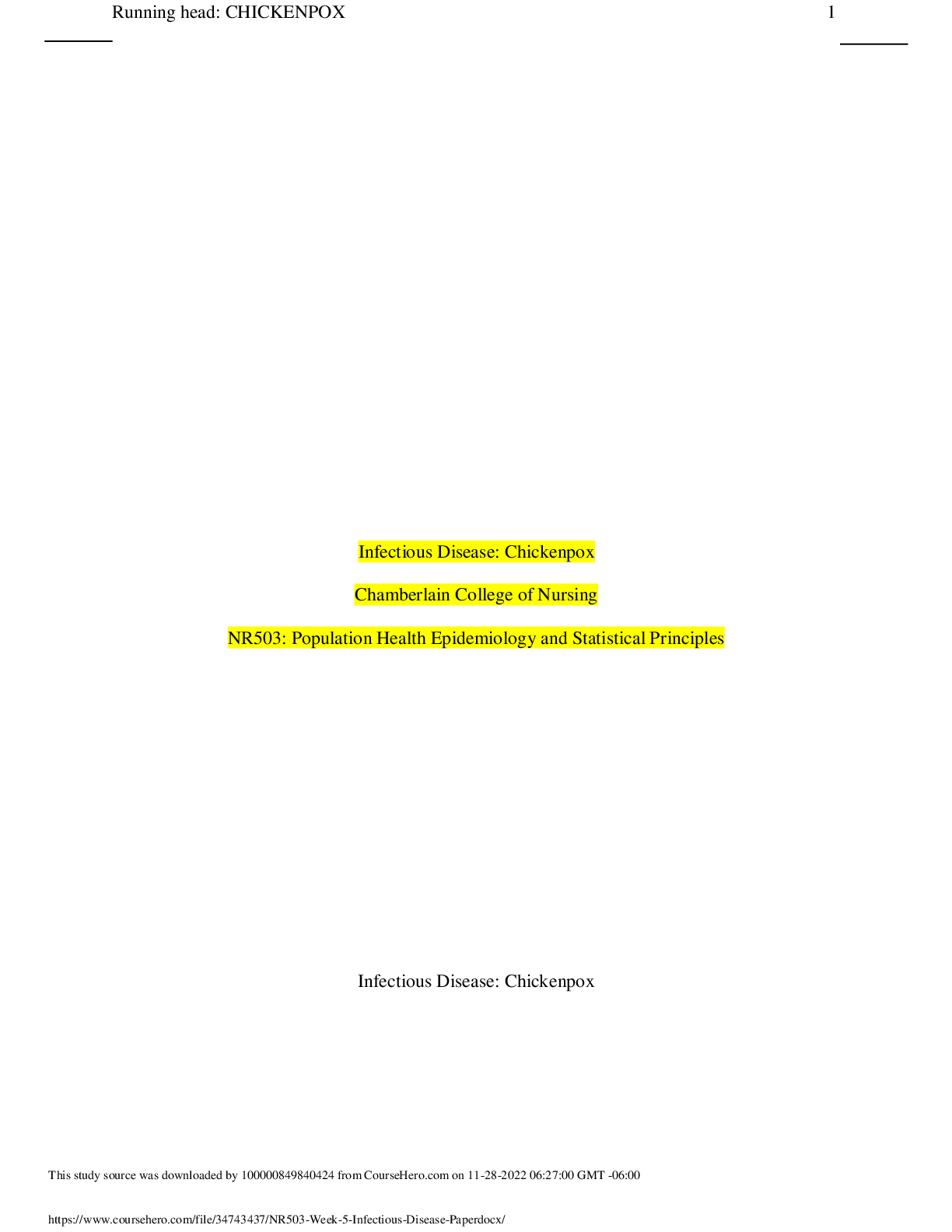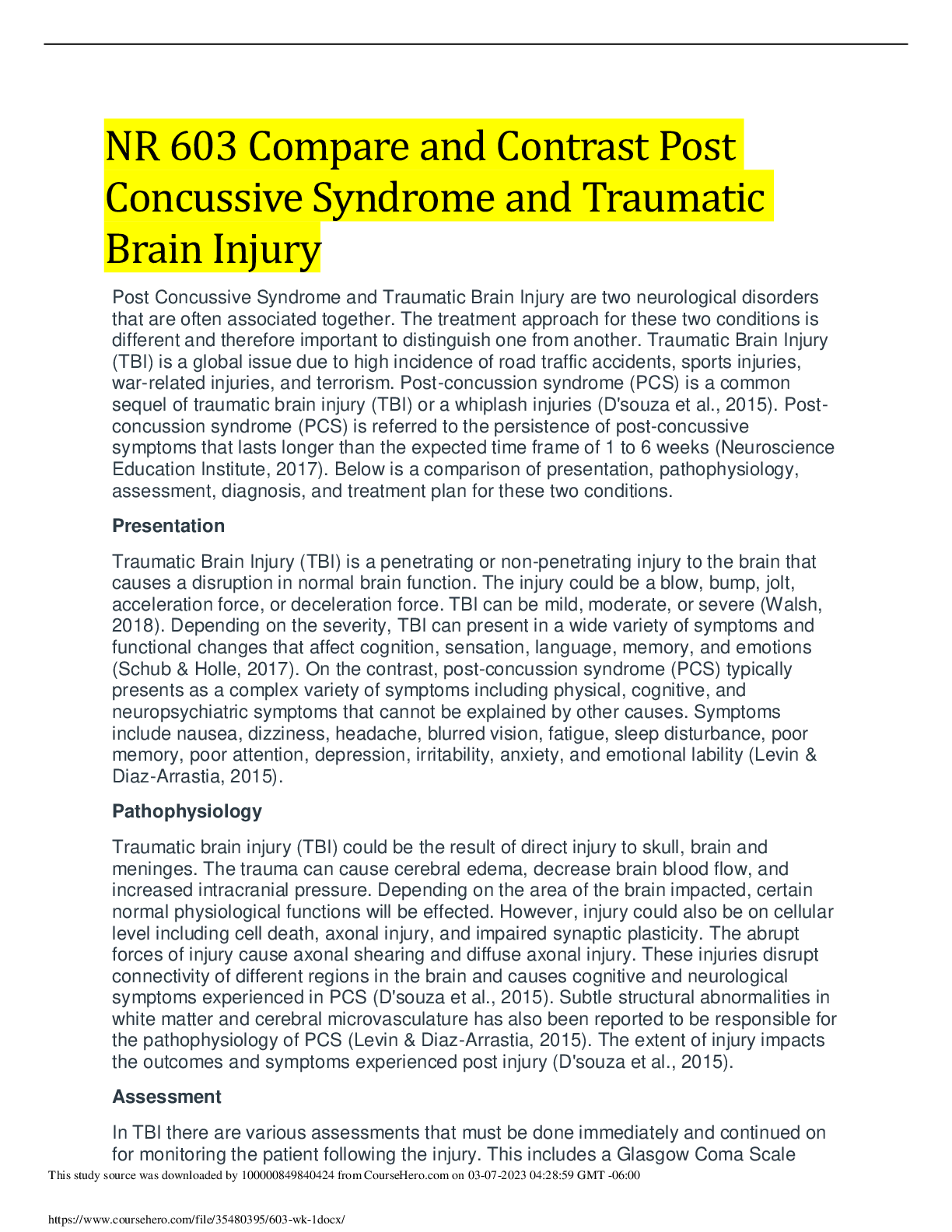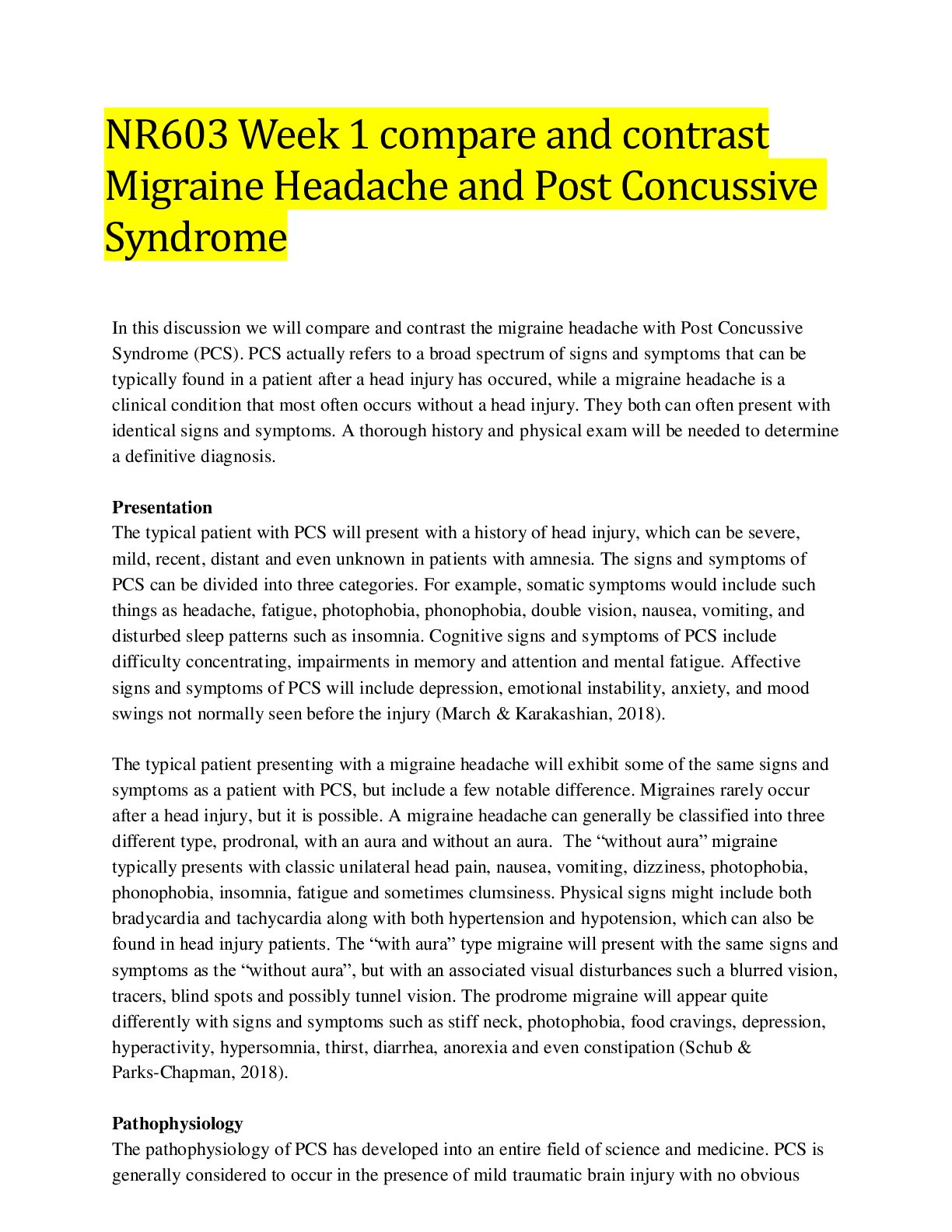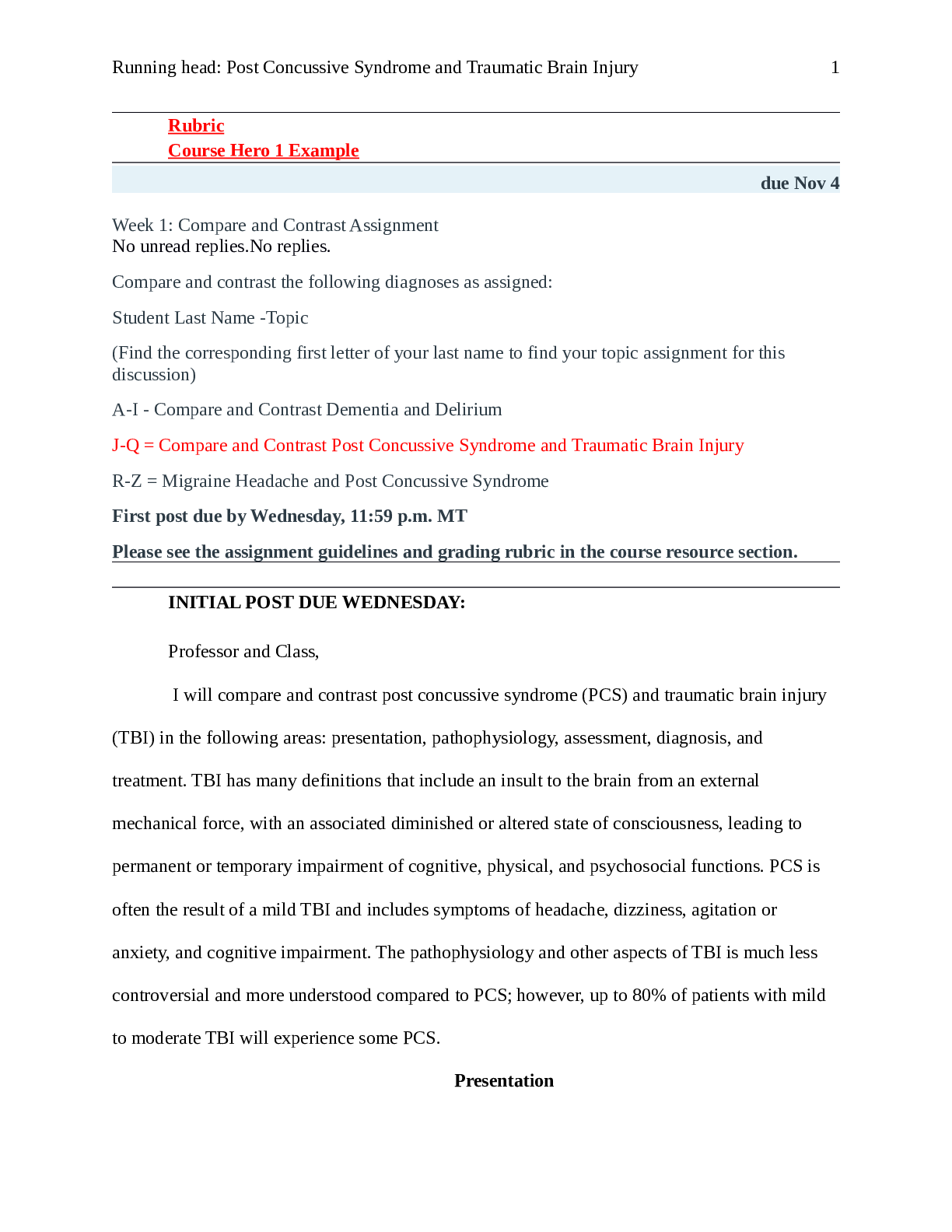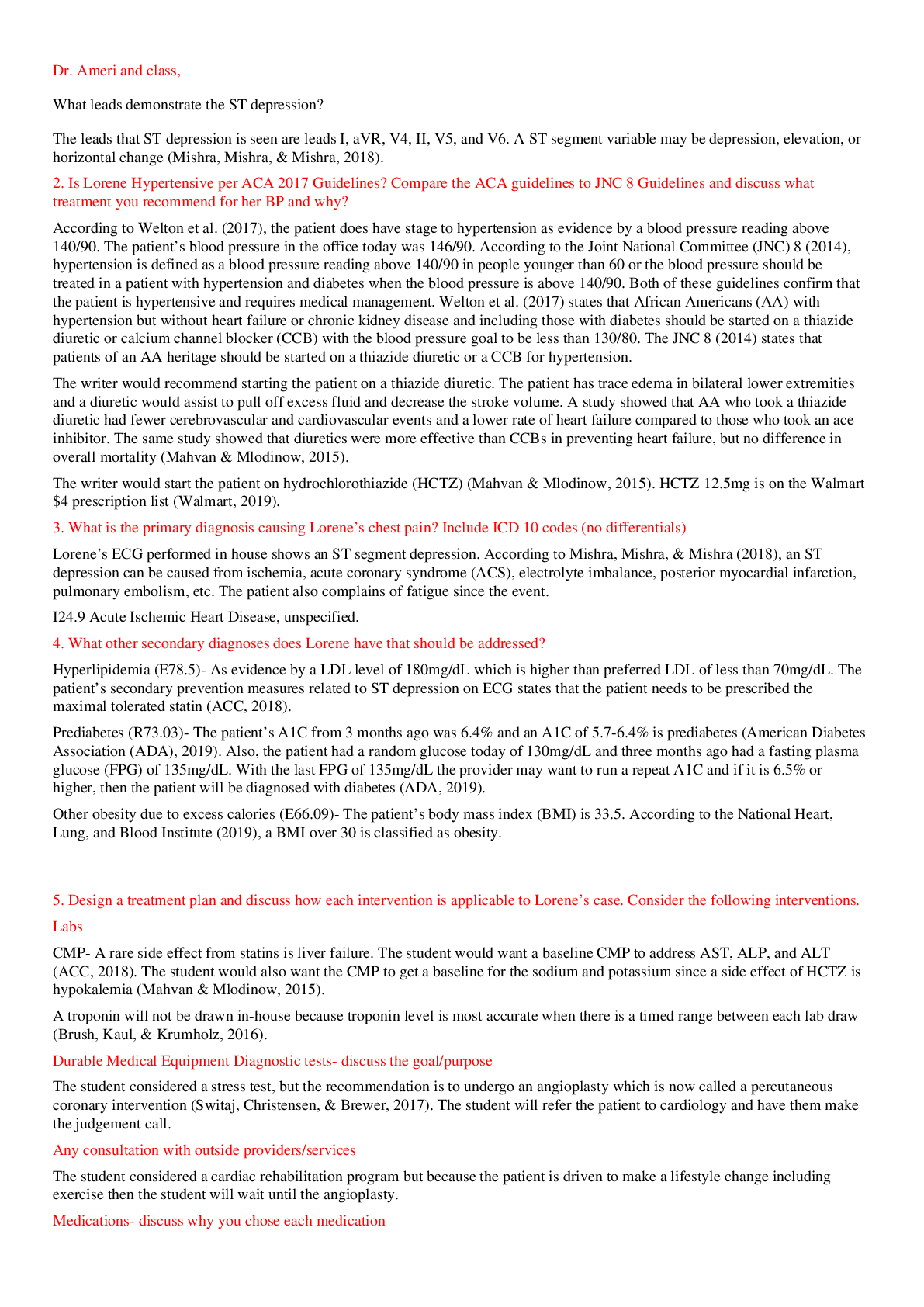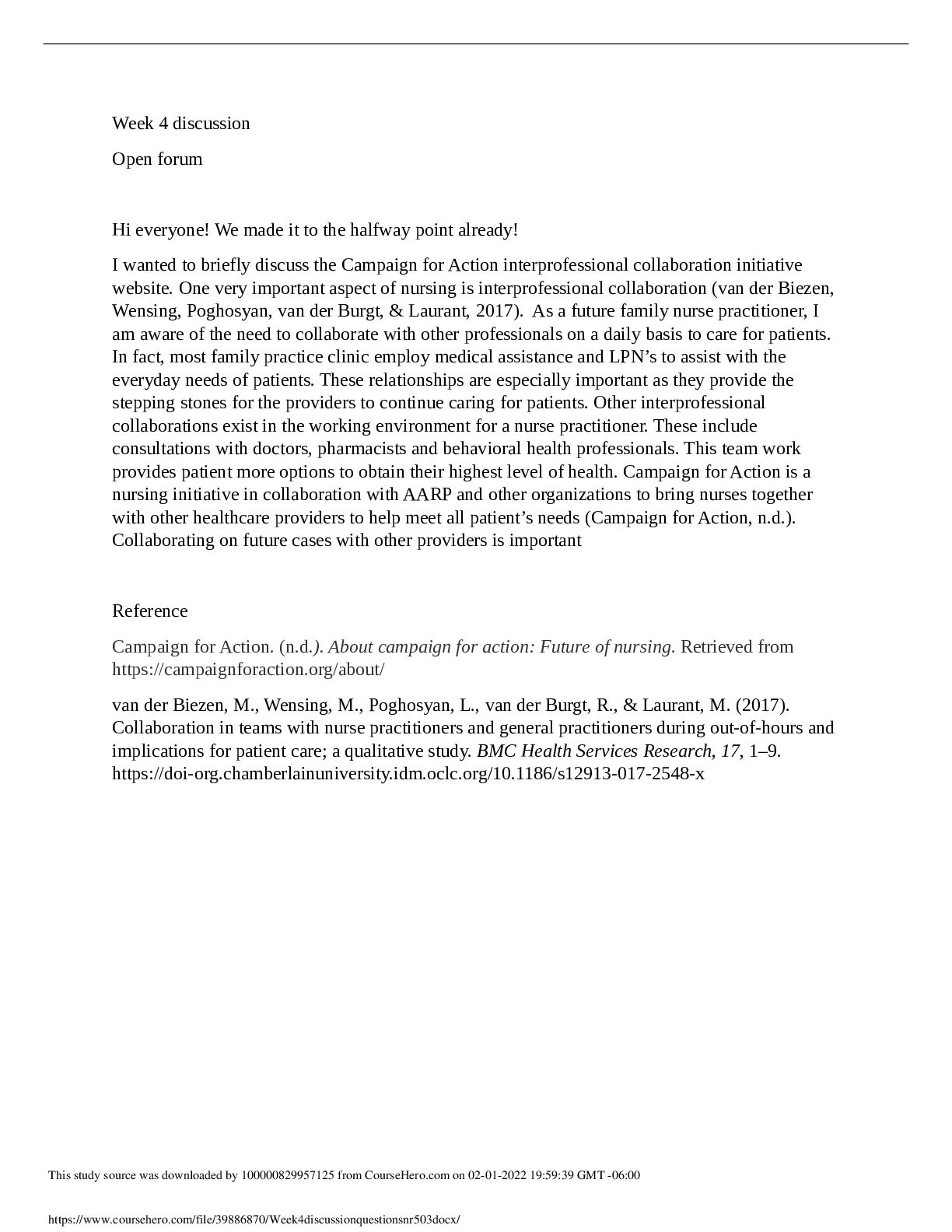*NURSING > DISCUSSION POST > NR 603 Week 1 Comparison and Contrast Assignment: Trigeminal Neuralgia and Giant Cell Arteritis-Cham (All)
NR 603 Week 1 Comparison and Contrast Assignment: Trigeminal Neuralgia and Giant Cell Arteritis-Chamberlain College Of Nursing( VERIFIED ANSWERS, 100% CORRECT)
Document Content and Description Below
Compare and Contrast Trigeminal Neuralgia and Giant Cell Arteritis During week one, the comparisons of Trigeminal Neuralgia and Giant Cell Arteritis is discussed. These diseases have similar and dis... similar signs and symptoms. This discussion will compare and contrast areas on presentation, pathophysiology, assessment, diagnosis, and treatment of both issues. Overall, a thorough history and physical exam will be needed to determine a definitive diagnosis. Trigeminal neuralgia (TN) presents as a chronic condition invading the trigeminal nerve. This nerve carries sensation impulses from the face to the brain. Slightly affected sensations can trigger a sudden experience of excruciating pain. The pain attacks can last for a short period or can progress to more frequent periods of agonizing pain. There are many treatment options, and the patient will not have to suffer from pain (Zakrzewska & Linskey, 2016). Giant cell arteritis (GCA) is also known as temporal arteritis. GCA is an inflammation of the artery lining most often in the temples of the head. This disease like TN can cause sudden pain and tenderness in the head, scalp, and jaw. GCA, unlike TN, can lead to vision problems ultimately causing blindness left untreated (Roberts & Clifford, 2017). The pathophysiology for TN is unknown but can be related to abnormalities in the afferent neurons of the trigeminal nerve. Researchers believe that symptoms are contributed to nerve compression and damage can create hyperexcitability along the axons. This hyperexcitability leads to the jolt of pain experienced by the patient (Vasappa, Kapur, & Krovvidi, 2016). More specifically, TN is thought to be demyelination of the trigeminal nerve root where the pathway meets the pons. The A-β fibers, which control touch sensations, and the A-δ and C fibers, which control pain sensation, lie close to each other. The fiber compressions and demyelination nearby initiates an ephaptic cross-talk between them. (Vasappa, Kapur, & Krovvidi, 2016). The pathophysiology of GCA is different than TN because it a disease caused by inflammation not demyelination of nerves. Inflation is considered vasculitis and can be localized, multifocal, or widespread. In GCA the elasticity of the arteries in the temporal, cranial or carotid systems is affected. Mononuclear cells will infiltrate and attack the arteries involved disrupts the elasticity. The artier becomes thickened and occludes the lumen (Roberts & Clifford, 2017). TN is more common in females than males with the age of onset between 50-60 years. The pain is normally unilateral, and the patient will experience a sudden jolt of excruciating discomfort. The patient describes the ache like an electric shock, piercing, shooting, or sharp like a knife stab characteristics. The discomfort will normally last for a couple of seconds or This study source was downloaded by 100000831988016 from CourseHero.com on 04-18-2022 07:30:01 GMT -05:00 https://www.coursehero.com/file/41064497/Compare-and-Contrast-Trigeminal-Neuralgia-and-Giant-Cell-Arteritisdocx/ can become routine with episodes lasting days, week, or months. The locations are normally in the teeth, jaw, cheeks, and will be less common in the forehead and eye, unlike GCA. In TN there are not associated symptoms as a complication (Vasappa, Kapur, & Krovvidi, 2016). Like TN, GCA is also more common in females than males. The age is older being with onsets of problems greater than 50 years of age with the mean age being 71 years. The pain is experienced unilaterally like TN but is experienced bilaterally. The pain has a similar sudden onset, but the patient will experience symptoms like a headache. The person will experience pain in the temporal and occipital areas and will not be felt in the teeth or jaws. The frequency of pain can vary unlike the sudden unknown onset of the TN. Som complications of GCA can lead to permanent blindness, double vision, scalp tenderness, and overall joint aching (Roberts & Clifford, 2017). To diagnosis TN the provider typically uses history and clinical features to determine the cause. A neurological exam will be used to detect trigger areas. Investigations around the trigeminal nerve or fifth cranial nerve are examined. The patient's description of pain is a great diagnosis tool to support the presence of TN. An MRI is used to help rule out secondary cases of TN. This secondary causes could be like MS or a tumor causing decompression of nerves(Vasappa, Kapur, & Krovvidi, 2016). GCA is more difficult to diagnosis than TN because it can resemble other conditions. Like with TN the provider will ask about symptoms, medical history and conduct a thorough exam. The exam will focus more on temporal arteries. One or both of the temporal arteries will present with tenderness, a reduced pulse, and will feel hard to touch(Koster, Matteson, & Warrington, 2018. GCA will require blood work, unlike TN, and these test will be erythrocyte sedimentation rate, and C-reactive protein (CRP). The sed rate shows how fast red blood cells fall to the bottom of the collection tube which can indicate some inflammation in the body. The CRP measure elements produced by the liver that indicative of swelling (Koster, Matteson, & Warrington, 2018. The imaging used to diagnosis GCA is Doppler ultrasound, magnetic resonance angiography (MRA), and positron emission tomography (PET). The doppler can be used to see how well the blood is flowing in the blood vessels. A slow movement would be indicative of closed lumen or edema. The MRA is used with an MRI to show contrast pictures inside the blood vessels. The PET scan is also similar to an MRA but uses a tracer solution that creates a detailed picture of the patient’s larger vessels and illuminates areas of swelling. GCA requires more blood work and imaging than TN. To ultimately diagnosis GCA a biopsy will produce a specimen including abnormally large cells creating inflammation Matteson, & Warrington, 2018). The treatment for TN revolves around anticonvulsants and neuropathic pain medications. Examples are carbamazepine, gabapentin, pregabalin, and amitriptyline. Carbamazepine is known to prevent synaptic triggering in the trigeminal nucleus. The other medications focus on treating TN like a neuropathic pain condition. If medications fail then surgical procedures are needed (Vasappa, Kapur, & Krovvidi, 2016). This study source was downloaded by 100000831988016 from CourseHero.com on 04-18-2022 07:30:01 GMT -05:00 https://www.coursehero.com/file/41064497/Compare-and-Contrast-Trigeminal-Neuralgia-and-Giant-Cell-Arteritisdocx/ The treatment for GCA is different than TN because it focuses around reducing inflammation. High doses of corticosteroids like prednisone are used to reduce the pain by lessening the irritation. The patient should feel symptoms subside in a few days after treatment is started. When the patient is tapering off the steroid, headaches can be present, and they may develop signs of polymyalgia rheumatica. These flare-ups may require an added boost of steroids. GCA does not require a surgical route to eliminate symptoms like TN Matteson, & Warrington, 2018). The comparison and contrast of GCA and TN are interesting to review. Both disease present with sudden pain, one originates in the jaw and the other as a headache. They are very different in pathology because TN relates to nerve compression as GCA is a result of inflammation in the blood vessels. Providers will assess both issues by a collection of medical history, symptoms present, and a detailed assessment focusing on neurological deficits. The diagnosis is simpler for TN and GCA requires imagining and blood work to identify. In the end, both diseases require different treatment and [Show More]
Last updated: 1 year ago
Preview 1 out of 3 pages
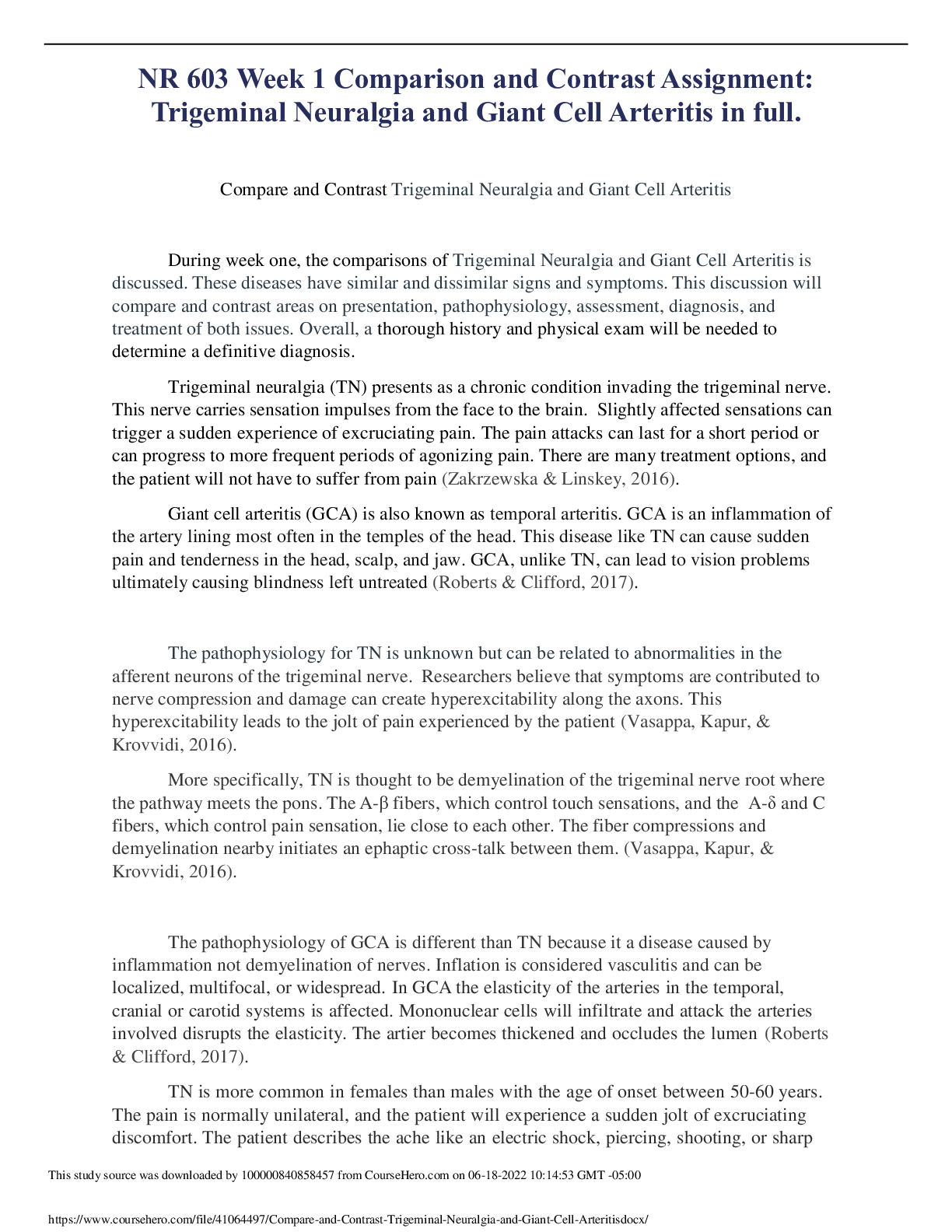
Reviews( 0 )
Document information
Connected school, study & course
About the document
Uploaded On
Apr 18, 2022
Number of pages
3
Written in
Additional information
This document has been written for:
Uploaded
Apr 18, 2022
Downloads
0
Views
96

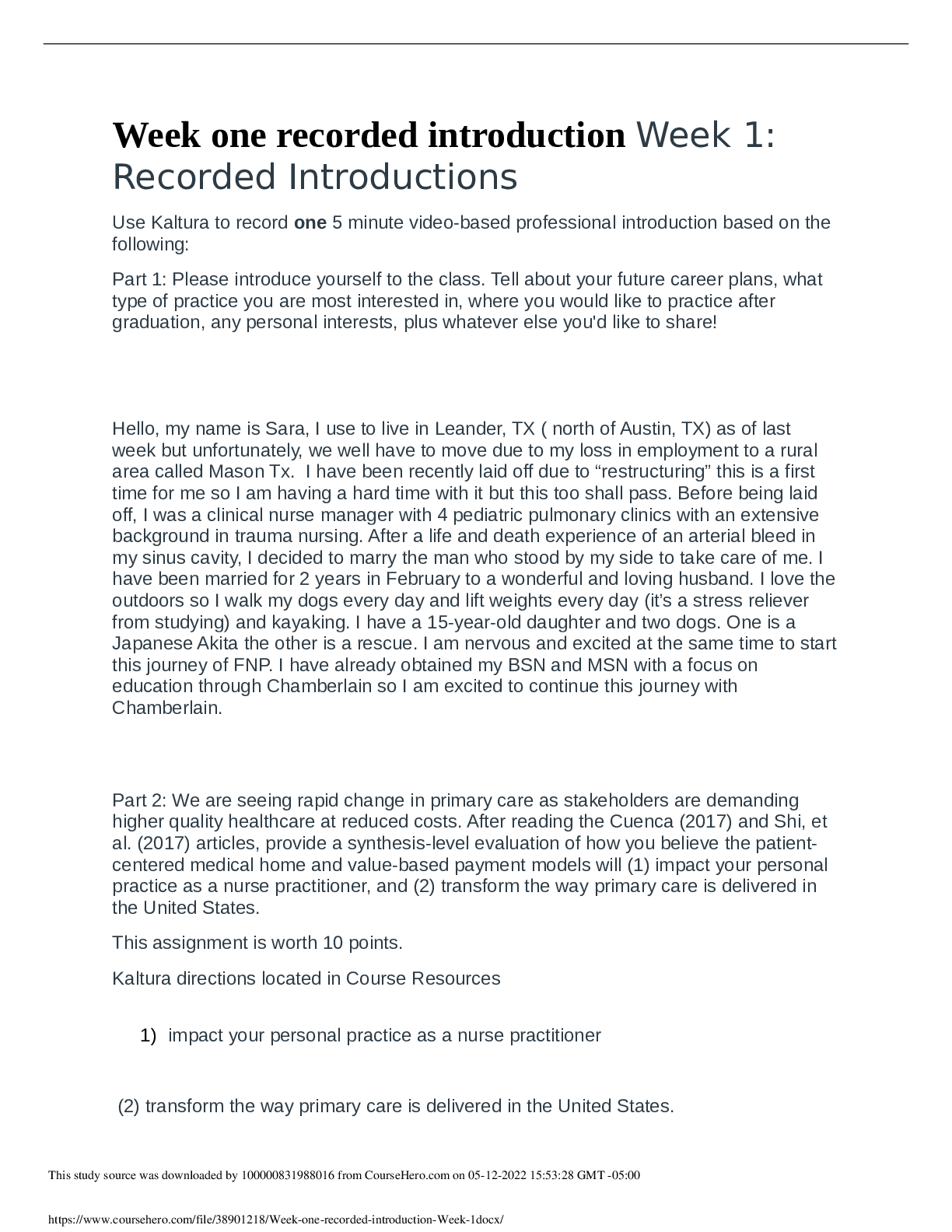


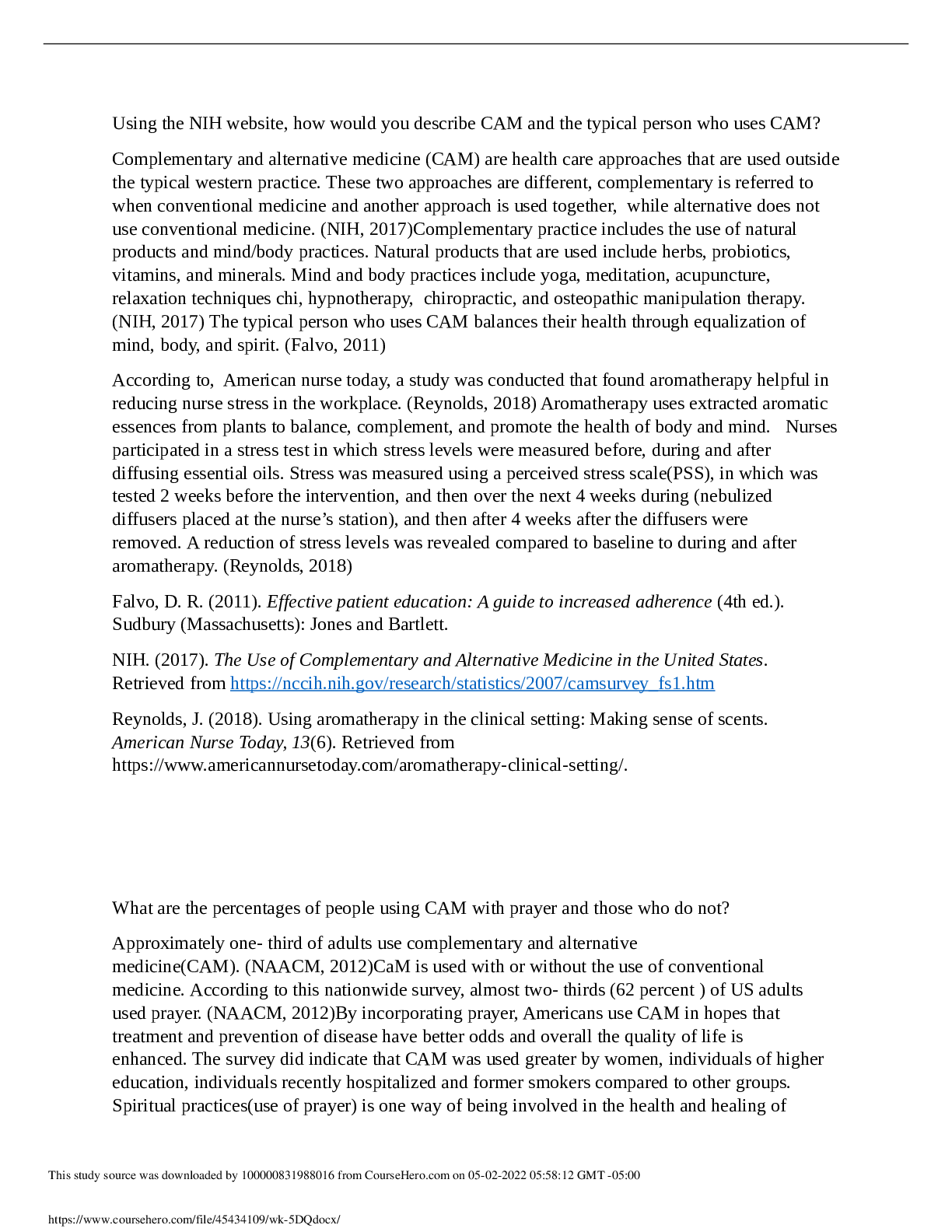


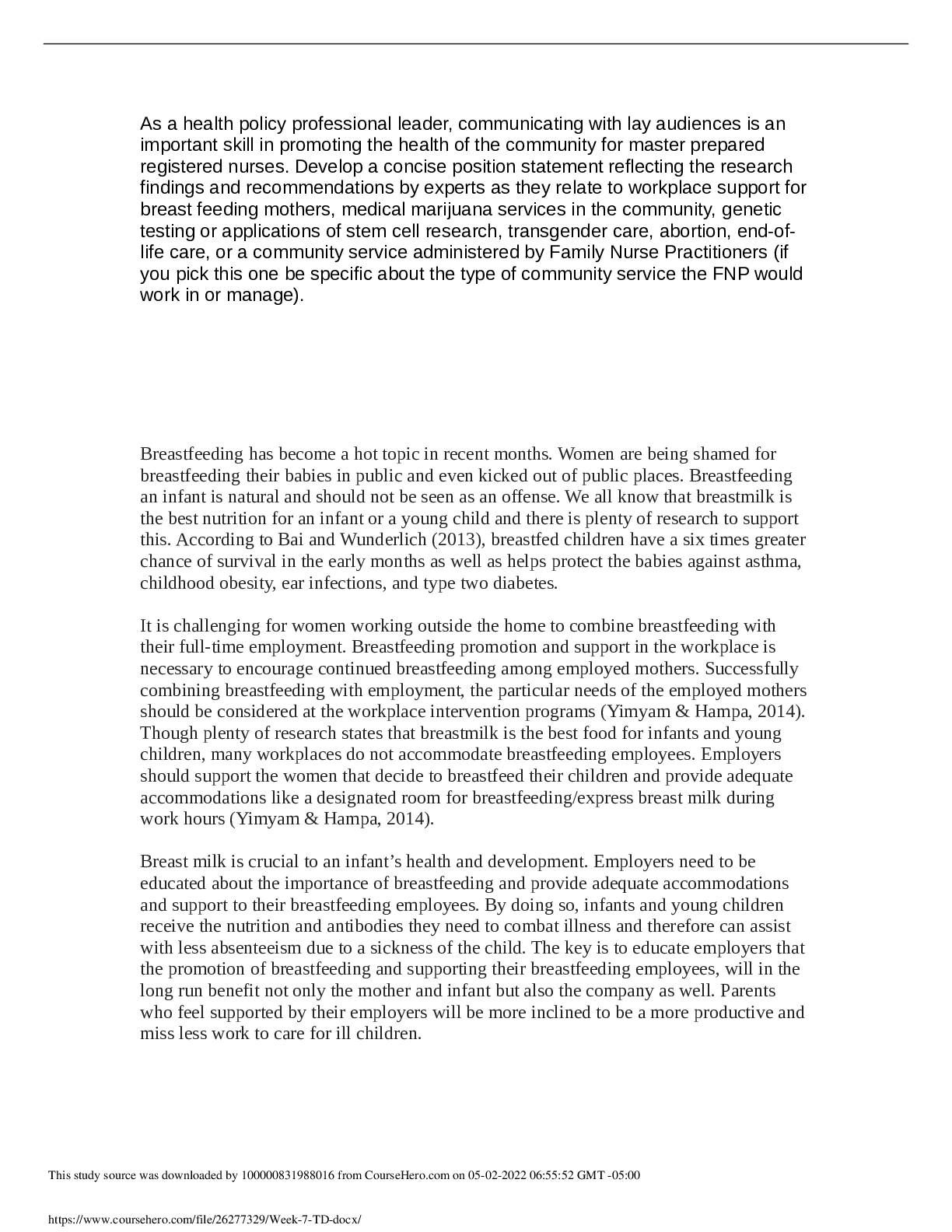
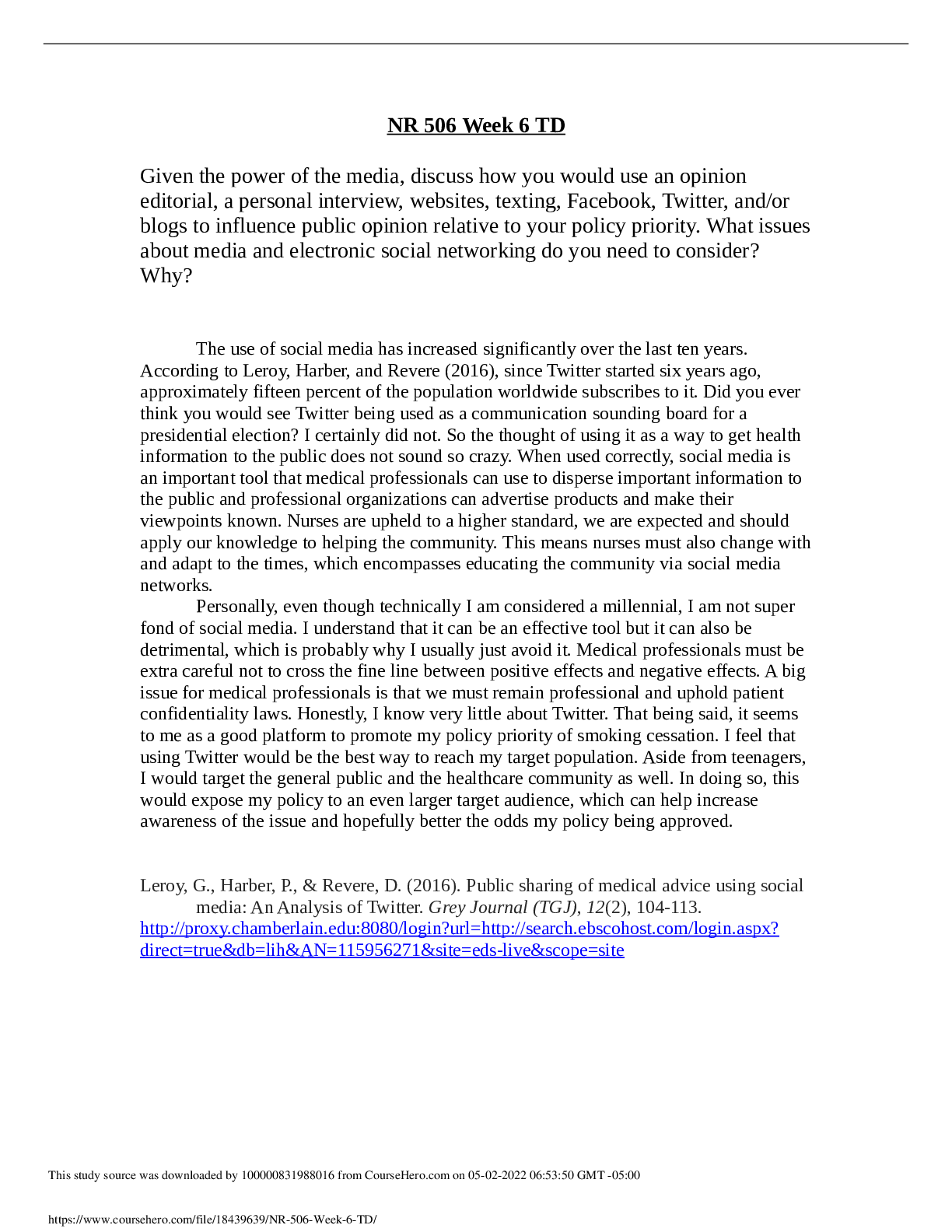
.png)
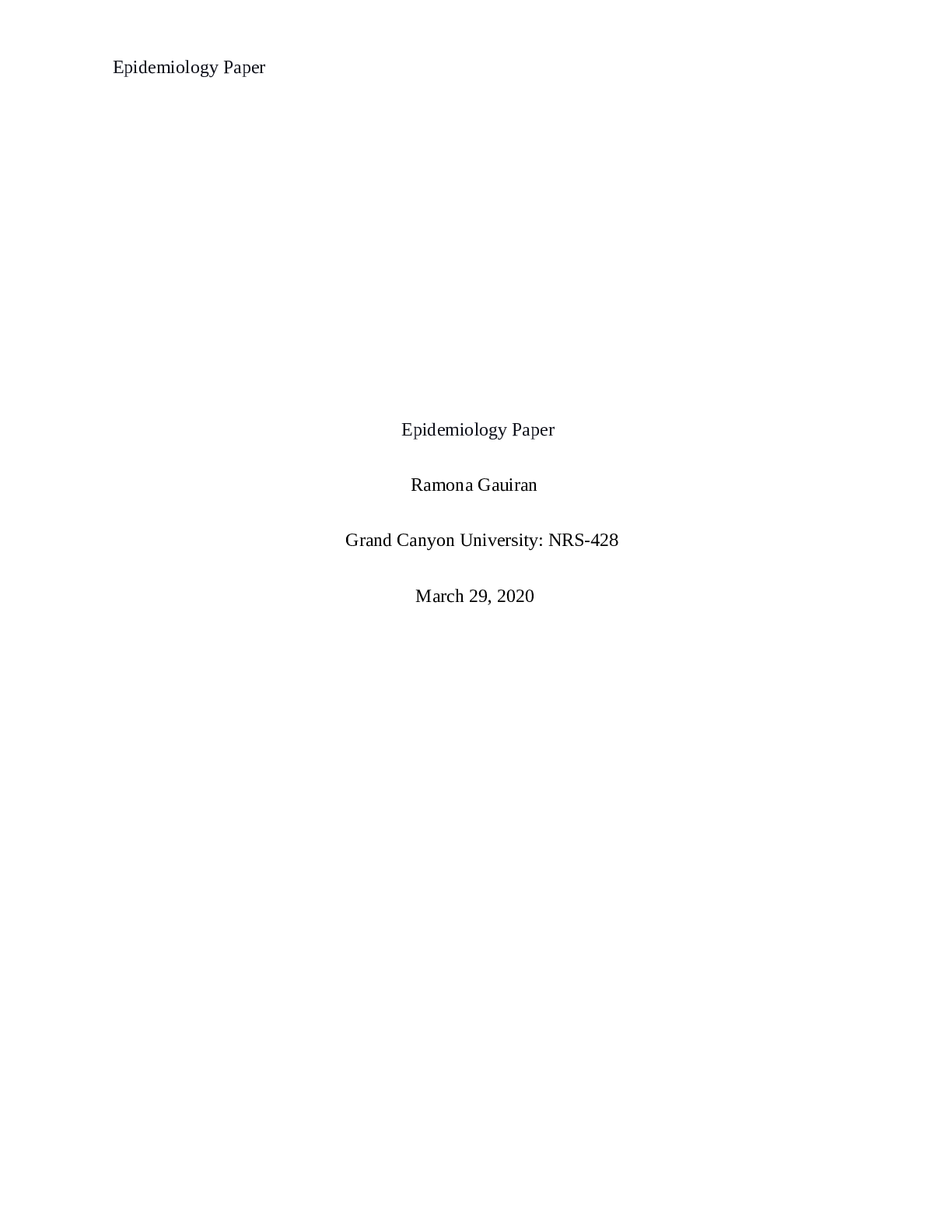
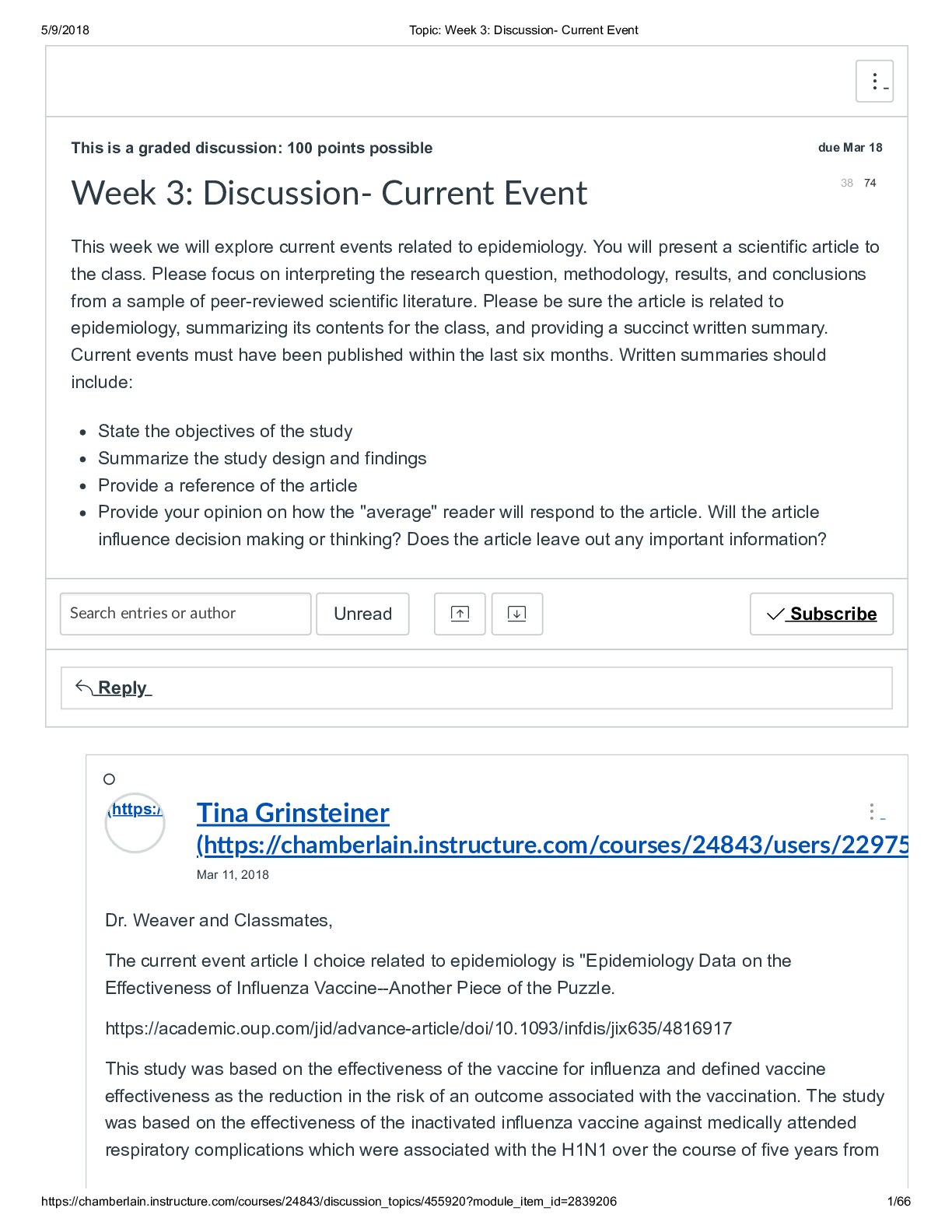

.png)

.png)
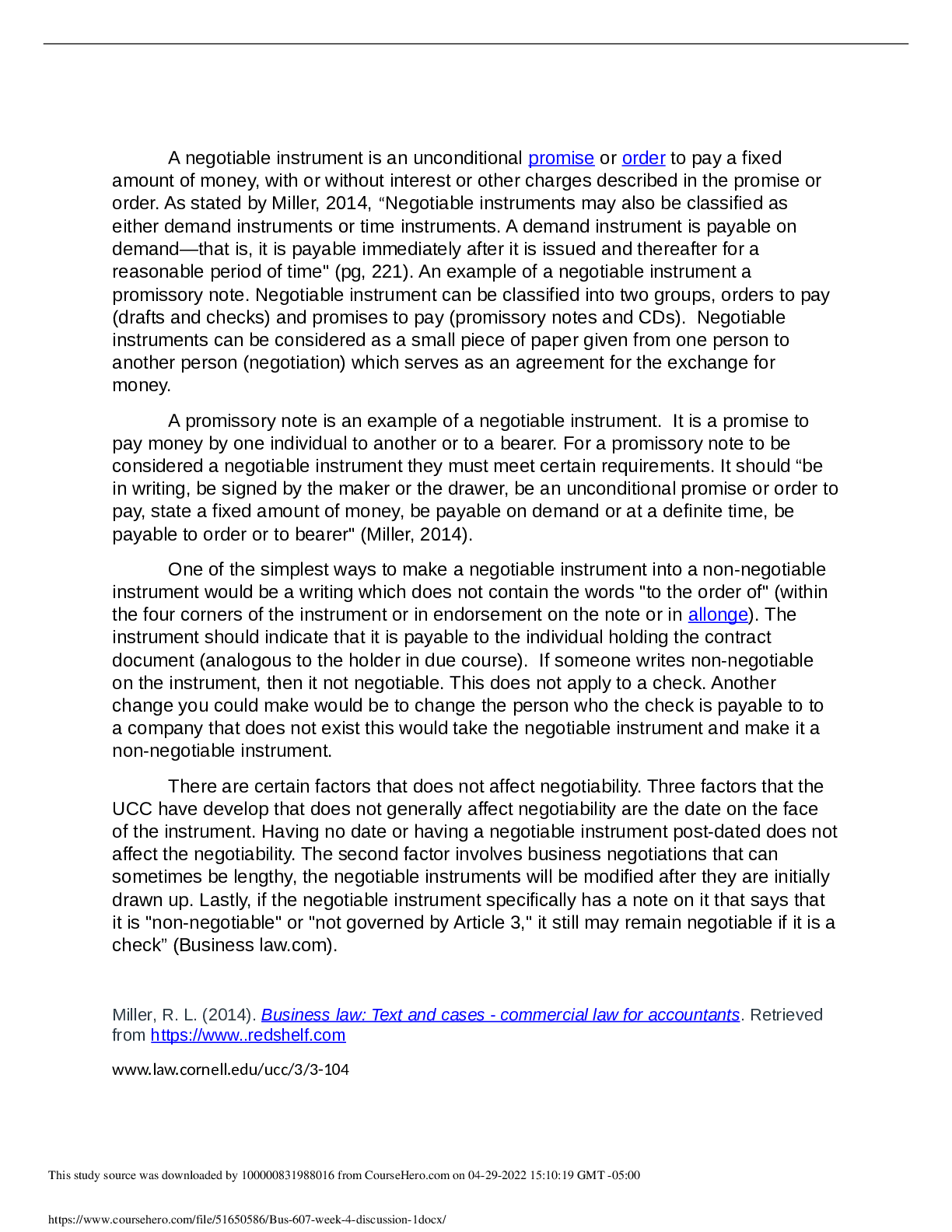
.png)
.png)

.png)

.png)

.png)
